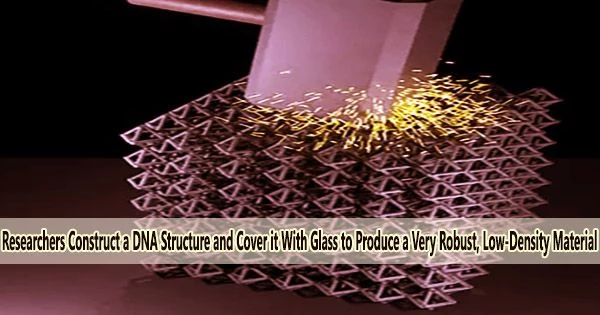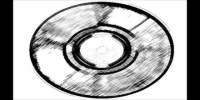Strong and lightweight materials have the potential to enhance anything from body armor to automobiles. However, the two traits typically do not coexist. Now, scientists from the University of Connecticut and its associates have created a remarkably strong, light material utilizing two unusual building blocks: DNA and glass.
“For the given density, our material is the strongest known,” says Seok-Woo Lee, a materials scientist at UConn. Lee and colleagues from UConn, Columbia University, and Brookhaven National Lab reported the details on July 19, 2023, in Cell Reports Physical Science.
Strength is relative. Iron, for example, can take seven tons of pressure per square centimeter. But it’s also very dense and heavy, weighing 7.8 grams/cubic centimeter. Other metals, such as titanium, are stronger and lighter than iron.
And certain alloys combining multiple elements are even stronger. Strong, lightweight materials have enabled the development of improved medical devices, faster, safer autos, and lightweight body armor.
For instance, making the car itself lighter without compromising safety or lifespan is the simplest approach to increase the range of an electric vehicle without increasing the battery size. To create new lightweight high strength materials, materials scientists had to get even more inventive in recent years as standard metallurgical methods had run their course.
Now, Lee and colleagues report that by building a structure out of DNA and then coating it with glass, they have created a very strong material with very low density. Glass might seem a surprising choice, as it shatters easily.
But most of the time, an imperfection in the structure of the glass a crack, a scratch, or missing atoms causes it to shatter. One cubic centimeter of flawless glass can endure 10 tons of pressure, which is more than three times the amount of pressure that last month’s Oceangate Titan submersible collapsed close to the Titanic.
I am a big fan of Iron Man movies, and I have always wondered how to create a better armor for Iron Man. It must be very light for him to fly faster. It must be very strong to protect him from enemies’ attacks. Our new material is five times lighter but four times stronger than steel. So, our glass nanolattices would be much better than any other structural materials to create an improved armor for Iron Man.
Seok-Woo Lee
It’s very difficult to create a large piece of glass without flaws. But the researchers knew how to make very small flawless pieces. As long as glass is less than a micrometer thick, it’s almost always flawless. Any constructions created of immaculate nanoscale glass should be sturdy and light because glass has a lower density than metals and ceramics.
The team created a structure of self-assembling DNA. Almost like Magnatiles, pieces of DNA of specific lengths and chemistry snapped themselves together into a skeleton of the material. Imagine the frame of a house or building, but made of DNA.
Oleg Gang and Aaron Mickelson, nanomaterials scientists at Columbia University and Brookhaven’s Center for Functional Nanomaterials, then coated the DNA with a very thin layer of glass-like material only a few hundred atoms thick. The glass barely covered the DNA strands, leaving a sizable portion of the material volume unfilled, similar to the spaces inside a house or other structure.
The DNA skeleton, making the material exceedingly robust, strengthened the thin, perfect coating of glass and the voids, which made up the majority of the material’s volume, made it lightweight. Thus, compared to steel, glass nanolattice structures are four times stronger but five times less dense. This unusual combination of lightweight and high strength has never been achieved before.
“The ability to create designed 3D framework nanomaterials using DNA and mineralize them opens enormous opportunities for engineering mechanical properties. But much research work is still needed before we can employ it as a technology,” says Gang.
The team is currently working with the same DNA structure but substituting even stronger carbide ceramics for glass. They have plans to experiment with different DNA structures to see which makes the material strongest.
Future materials built on the same idea hold significant promise as energy-saving materials for strong-focused devices like cars. Lee believes that DNA origami nanoarchitecture will pave the way for the development of hitherto unimaginable lighter and stronger materials.
“I am a big fan of Iron Man movies, and I have always wondered how to create a better armor for Iron Man. It must be very light for him to fly faster. It must be very strong to protect him from enemies’ attacks. Our new material is five times lighter but four times stronger than steel. So, our glass nanolattices would be much better than any other structural materials to create an improved armor for Iron Man.”















